Best low-impact cardio options for home
Discover 5 effective low-impact cardio options for home workouts that protect your joints while boosting fitness. Transform your health journey with these sustainable exercises for
Rowing is one of the most efficient cross-training activities available, working 86% of your muscles in a single, low-impact movement. When properly incorporated into your fitness regimen, rowing complements other sports by improving cardiovascular endurance, building muscular strength, and enhancing movement patterns across activities. The dynamic nature of rowing provides unique benefits whether you’re training for running events, team sports, or general fitness goals.
Rowing offers several distinct advantages that make it exceptional for cross-training:
These comprehensive benefits make rowing uniquely positioned as a complementary activity for almost any sport. Whether you’re seeking to improve performance, enhance recovery, or build foundational fitness, rowing’s balanced approach supports diverse training goals while protecting long-term joint health and movement quality.
Creating an effective rowing cross-training schedule requires strategic implementation:
Finding the right balance is highly individual and may require experimentation to determine your optimal cross-training rhythm. The key is integrating rowing in ways that complement rather than compromise your primary training, creating synergy between activities while respecting your body’s recovery needs. Remember to consult with your doctor before making significant changes to your exercise routine, particularly if you have existing health conditions or injuries.
Effective cross-training with rowing involves incorporating various workout styles to address different fitness components:
These workout varieties create a balanced approach to cross-training that addresses multiple fitness domains while complementing your primary sport’s demands. By strategically rotating through these different rowing sessions based on your training cycle, recovery needs, and performance goals, you’ll maximize the cross-training benefits while minimizing redundant stress patterns that could lead to overuse injuries.
Creating integrated workouts that pair rowing with complementary exercises offers powerful training efficiency. Consider these effective combinations:
These strategic exercise combinations create comprehensive workout experiences that address multiple fitness components simultaneously. When implementing these integrated sessions, always begin with a proper 5-10 minute warm-up of light rowing focused on technique before increasing intensity, and consistently prioritize movement quality over speed, especially as fatigue develops during circuit work. This balanced approach ensures you receive maximum cross-training benefit while managing overall training stress effectively.
Maximizing rowing’s cross-training benefits requires avoiding these common technical and programming errors:
By addressing these common errors, you’ll transform rowing from merely another exercise into a powerful cross-training tool. Proper technique, appropriate intensity distribution, and personalized machine setup create the foundation for effective training that complements rather than competes with your primary sport. This attention to quality ensures you develop transferable fitness components while minimizing unnecessary stress and maximizing rowing’s unique cross-training advantages.
At RP3 Rowing, we understand the nuances of effective cross-training and design our dynamic rowing machines to deliver the most realistic experience possible. Incorporating rowing into your training routine using these guidelines will help you achieve balanced fitness development while complementing your primary athletic goals.
If you’re interested in learning more about the benefits of rowing, reach out to our team of experts today.
Discover 5 effective low-impact cardio options for home workouts that protect your joints while boosting fitness. Transform your health journey with these sustainable exercises for
Discover 5 effective low-impact exercises that protect your back while maintaining fitness intensity. Learn proper form techniques to strengthen your spine without risking injury.
Discover 5 effective home workouts that build strength without stressing your joints. Learn fluid movement techniques for pain-free exercise that delivers results while protecting your
Discover effective low-impact fitness strategies that build strength and cardio health without damaging your joints. Learn sustainable workout techniques for long-term health and injury prevention.
Discover 5 effective full-body low-impact workouts perfect for beginners that protect your joints while building strength and fitness. Start your sustainable exercise journey today!
Discover how low-impact fitness creates sustainable health benefits without joint pain. Learn 5 full-body workouts that deliver results while preserving your body for decades of
Discover why low-impact workouts deliver powerful fitness results without joint damage. Learn 6 key benefits and find the perfect exercise for sustainable daily fitness that
Discover why low-impact training on recovery days accelerates muscle repair, prevents injuries, and boosts long-term fitness gains. Learn optimal activities and avoid common recovery mistakes.
Discover why rowing machines deliver a complete workout while protecting your joints. Engage 85% of your muscles with zero impact stress—perfect for fitness enthusiasts of
Discover effective low-impact exercises perfect for returning to fitness after breaks or injuries. Learn 5 joint-friendly workouts that rebuild strength while preventing setbacks on your
Discover how rowing uniquely engages 85% of your muscles while enhancing flexibility in one efficient workout. Build strength and mobility simultaneously without stressing your joints.
Discover 5 low-impact routines that challenge your entire body without stressing your joints. Build strength and burn calories while protecting your knees, hips, and spine.
Discover how consistent low-impact activity delivers powerful physical and mental benefits without joint stress. Build fitness, reduce stress, and improve mobility through sustainable daily movement
Discover why rowing machines offer the ultimate low-impact, full-body workout for home fitness. Get 85% muscle engagement with minimal joint stress—perfect for all ages and
Discover how low-impact exercise protects your joints while delivering powerful fitness results. Learn 5 joint-friendly workouts that maintain mobility and prevent pain as you age.
Discover how to build sustainable low-impact fitness habits that protect your joints while delivering exceptional results. Learn proven strategies for lifelong exercise consistency without pain.

We will send you a personal quote as soon as possible.
As soon as the quote is ready, you will receive a link by email to order directly.